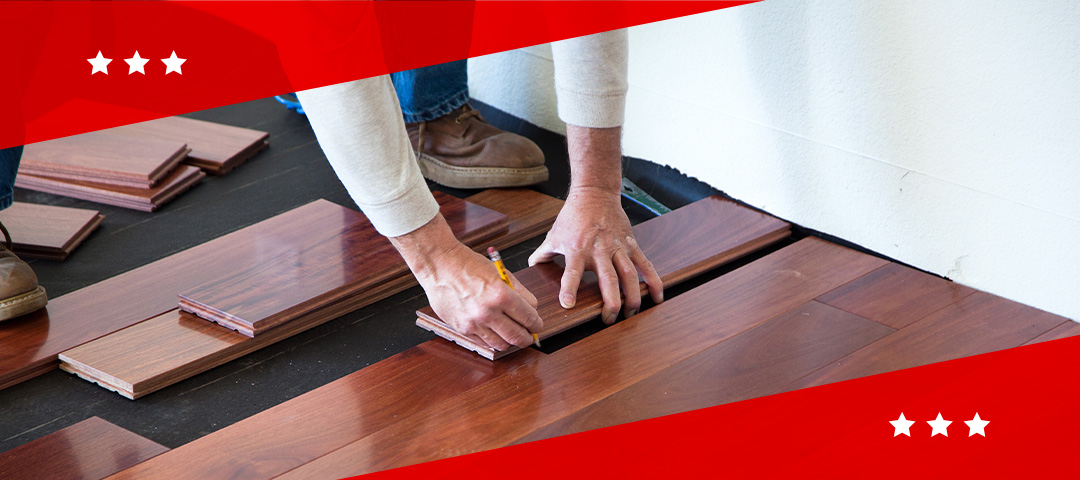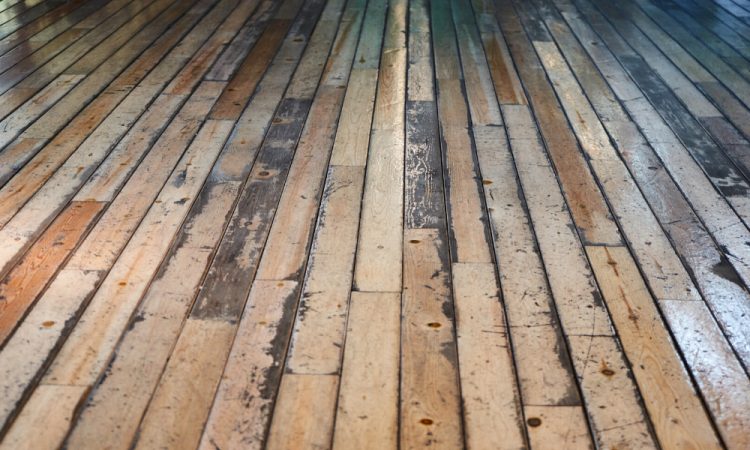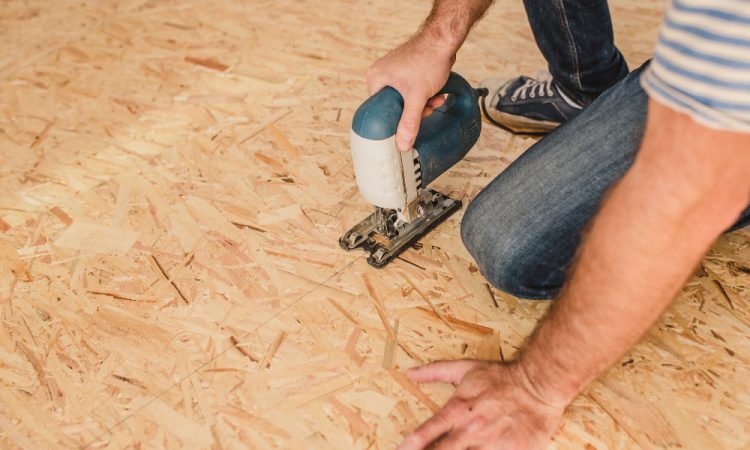How to Stop Your Wood Floors from Being So Squeaky
- Published By: District Floor Depot

You tiptoe to the kitchen for a midnight snack. You’re almost to the fridge when the floorboards betray you with a loud squeak.
The noise wakes your family. Now, everyone knows why the ice cream disappears overnight.
The easiest solution is to avoid walking on the squeaky spot. But, a better idea is to fix the floor.
Noisy floors show there’s a bigger problem than your ice cream consumption. Don’t panic yet. Most squeaky floors aren’t caused by foundation issues.
Squeaks mean there’s movement somewhere in the floor. When it happens, take some time to find the cause. It may be easier to fix than you think.
Here are 7 ways to stop your wood floors from being squeaky:
- Put a Shim into the Gap
- Nail a Piece of Wood Along a Warped Joist
- Put Wood Blocks Between Noisy Joists
- Use Construction Adhesive to Fill Long Gaps
- Screw the Subfloor to the Finished Floor
- Floorboard Lubricants
- Fix the Squeak from Above
Where’s the Squeak?
First, determine if your wood floors are worth repairing. In this post, we address minor repairs a homeowner can do.
Floor noise starts with movement. Figure out where the movement is, and you can silence your floors.
Board to Board
When two floorboards rub against each other they make noise where they touch. The noise occurs in one spot. You can see the boards move when you step on them.

Subfloor
Does your floor make noise as you walk across a room? If your subfloor is the culprit, the squeaks cover a larger area. You may or may not see movement.

Why is the Floor Making Noise?
Floor noise isn’t limited to older homes. A brand new home’s floors can creak, too.
Temperature affect floors. During Winter, dry air causes shrinkage and gaps between floorboards and the subfloor.
In the Summer, humidity makes wood swell which causes squeaks. Once the weather shifts, the noises disappear. Check with a professional if your squeaks last longer than seasonal changes.
How to Silence Your Squeaky Floor
No one wants to hear annoying squeaks. It’s irritating. Not to mention a surprise late at night!
Here are 7 ways you can end the noise without spending a lot of money.
1. Put a Shim into the Gap
Do you have access to the underside of your floors? If your basement ceilings aren’t finished access the subfloor from underneath.
Have someone walk on the floor above you. Listen for the squeak. When you know the exact location take a closer look with a flashlight.
Is there a gap between the top of the floor joist and the subfloor? If you can see the gap you can fix it.
Apply carpenter’s glue to a shim and slide it into the gap. Don’t force the shim or hammer it into position. That could cause a bump in the floor upstairs.
All you want is to fill the gap enough to stop the movement.
If you have more than one squeaky spot, repeat the process as needed.
2. Nail a Piece of Wood Along a Warped Joist
Sometimes floor joists shrink, warp, or decay. When that happens, the subfloor separates from the joists and creates a large gap.
The floor creaks when someone walks across the gap. It’s the sound of the nails sliding in and out of the joist.
Fix the problem by nailing a 2×4 or a 2×6 piece of wood into the troubled joist.
Use construction adhesive along the top of the wood where it touches the subfloor. Hold the wood flat against the joist and secure it with screws.
The extra wood supports the subfloor so it doesn’t move.
3. Put Wood Blocks Between Noisy Joists
Another solution to noisy floor joists is to place wood blocks between the joists. Use wood that matches the existing joists.
If you have 2×8 joists, cut the blocks from a 2×8 piece of lumber. Cut two or three blocks to fit between the joists. You want them snug, but not too tight.
Put construction adhesive along the top edge where each block touches the subfloor. Space the blocks along the length of the joist at even intervals.
Slide each block up until the adhesive connects with the subfloor. Screw it into the joist.
4. Use Construction Adhesive to Fill Long Gaps
A shim works for specific spots. If you find a long gap along a floor joist a shim isn’t the best choice.
Instead, use a caulking gun to push floor adhesive into the gap. When the adhesive hardens it prevents movement in the floor.
Most gaps appear on one side of a joist. Check both sides to be certain. If you find a gap on the other side, fill it with adhesive.
5. Screw the Subfloor to the Finished Floor
Is the squeak caused by the floor separating from the subfloor? Try using a short screw to fasten the subfloor and floor together.
Insert the screw from the underside of the subfloor into the bottom of the finished flooring. Make sure the screws aren’t too long.
A long screw could go through the top of the floorboards. Screws poking through the floor is worse than a squeak.
6. Floorboard Lubricants
Lubricants sound like a funny solution, but they stop squeaks caused by friction. This solution works when the space under the floor isn’t accessible.
Add a dry lubricant like talcum powder into the joints between your floorboards. Put a towel over the boards and walk over them. Keep walking until the lubricant settles into the cracks.
The powder reduces the friction between the boards. It should end small squeaks for a while.
7. Fix the Squeak from Above
If you don’t have access under the floor try fixing them from above. All you need is a hammer and finishing nails.
Locate the squeaky spot. Use a stud sensor to find the underlying joist. Drive the nail into the floor so it goes into the joist.
Use a nail set to ensure the nails are below the surface of the floor. Fill in the hole with wood filler.
If you have carpeting, cut a small hole in the carpet webbing. Make the hole large enough for the nail to fit through it. Peel back the carpet and drive the nail through the floor and subfloor.
You can buy special screws that let you drill through the carpet without lifting it.
Call the Floor Repair Specialists
Most squeaky floors are safe and need minor adjustments. But, there’s no reason to risk damaging your floors.
You may consult a general contractor if you have a major sub-floor work such as fixing any structural issues or replacing any joists that are bad.
Call a floor specialist if you aren’t comfortable making repairs. The pros at District Floor Depot can stop the squeaks.
Stop by one of our stores, or contact us online. We’ll make sure you can sneak a late night snack in peace!
